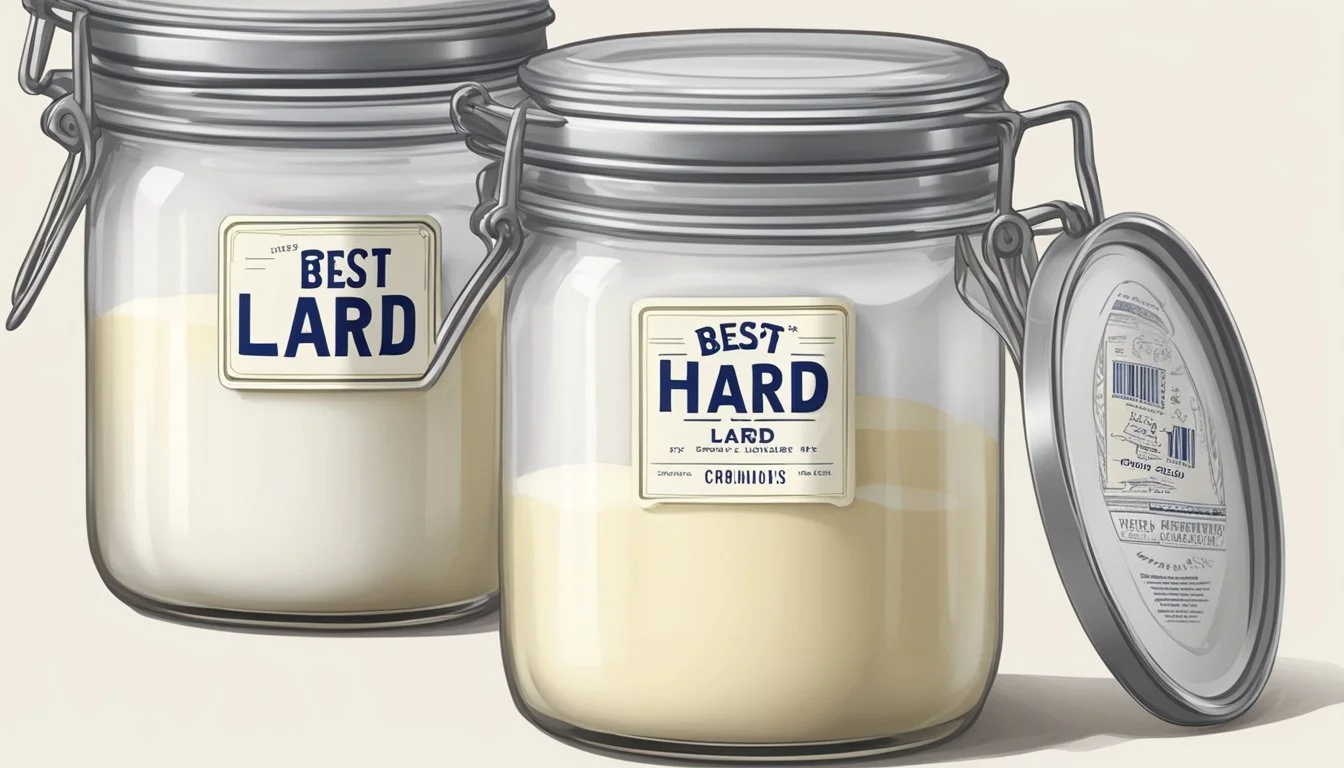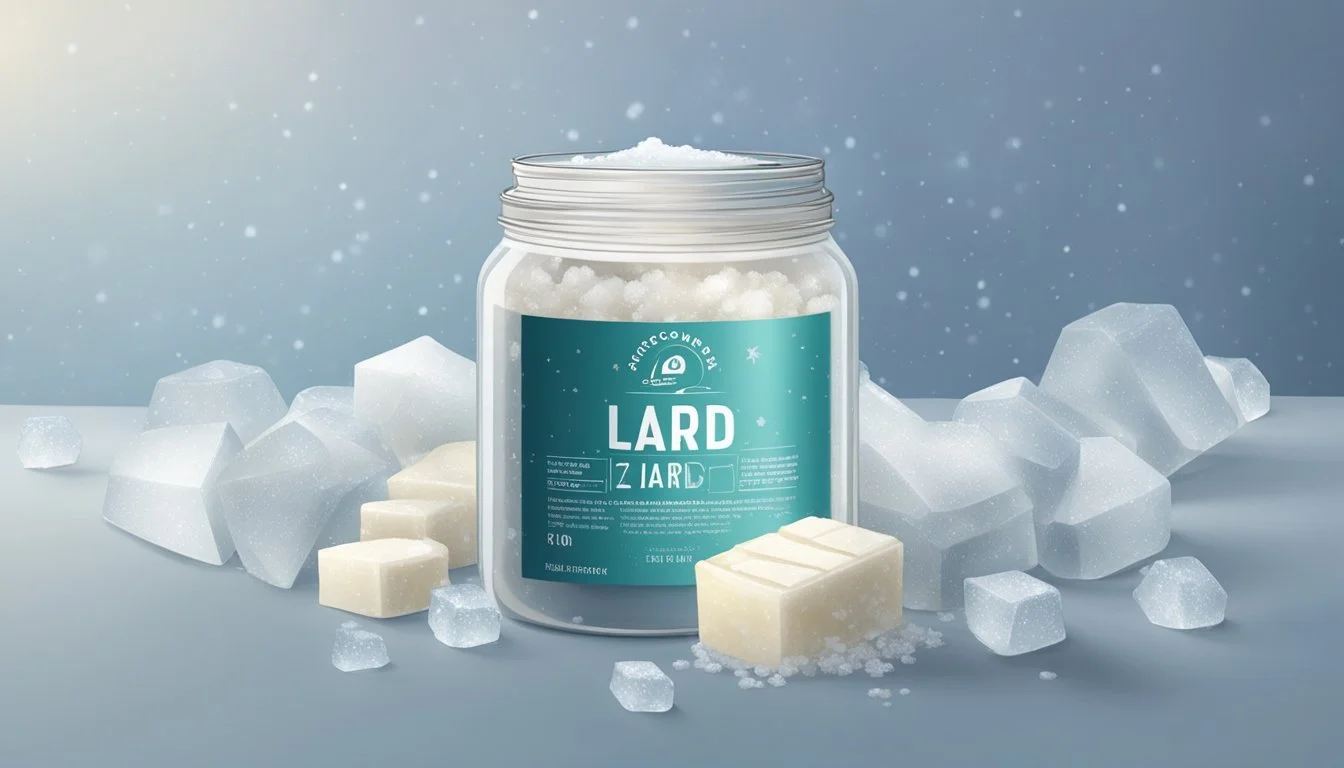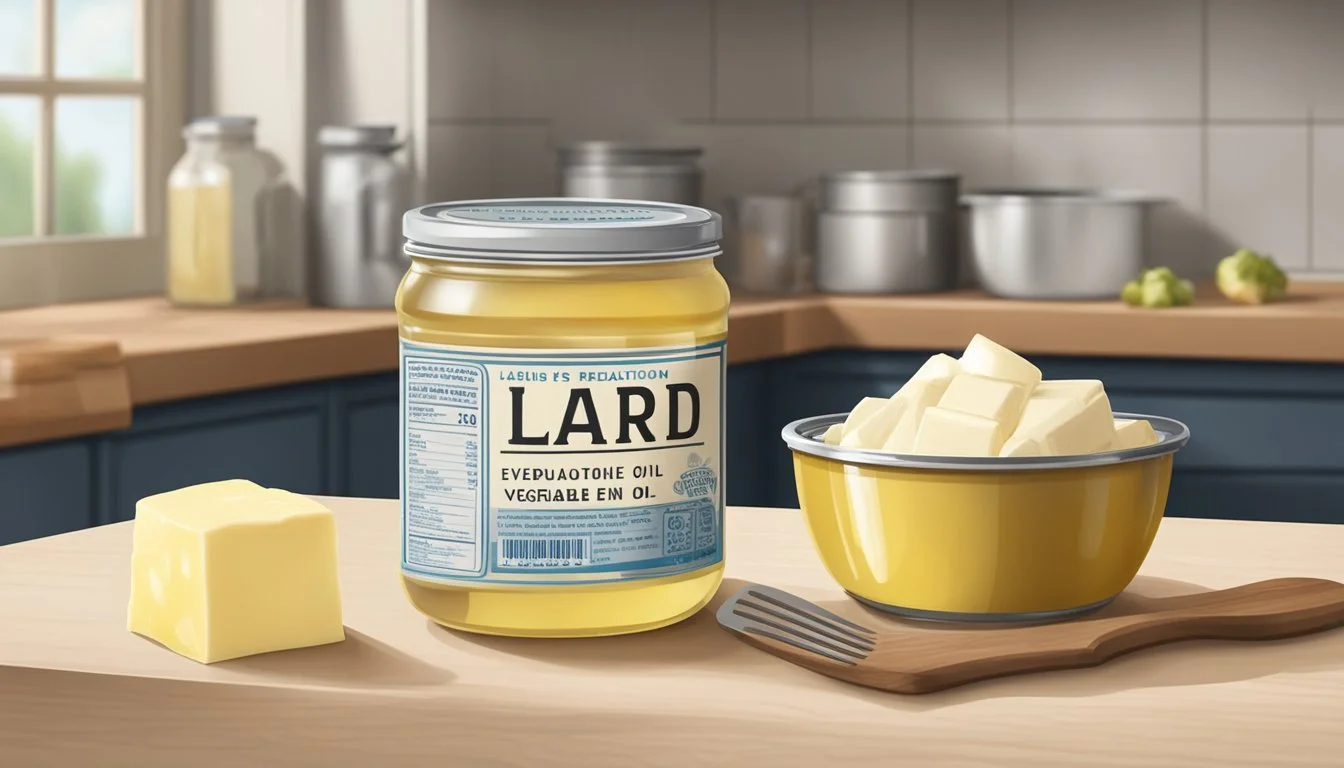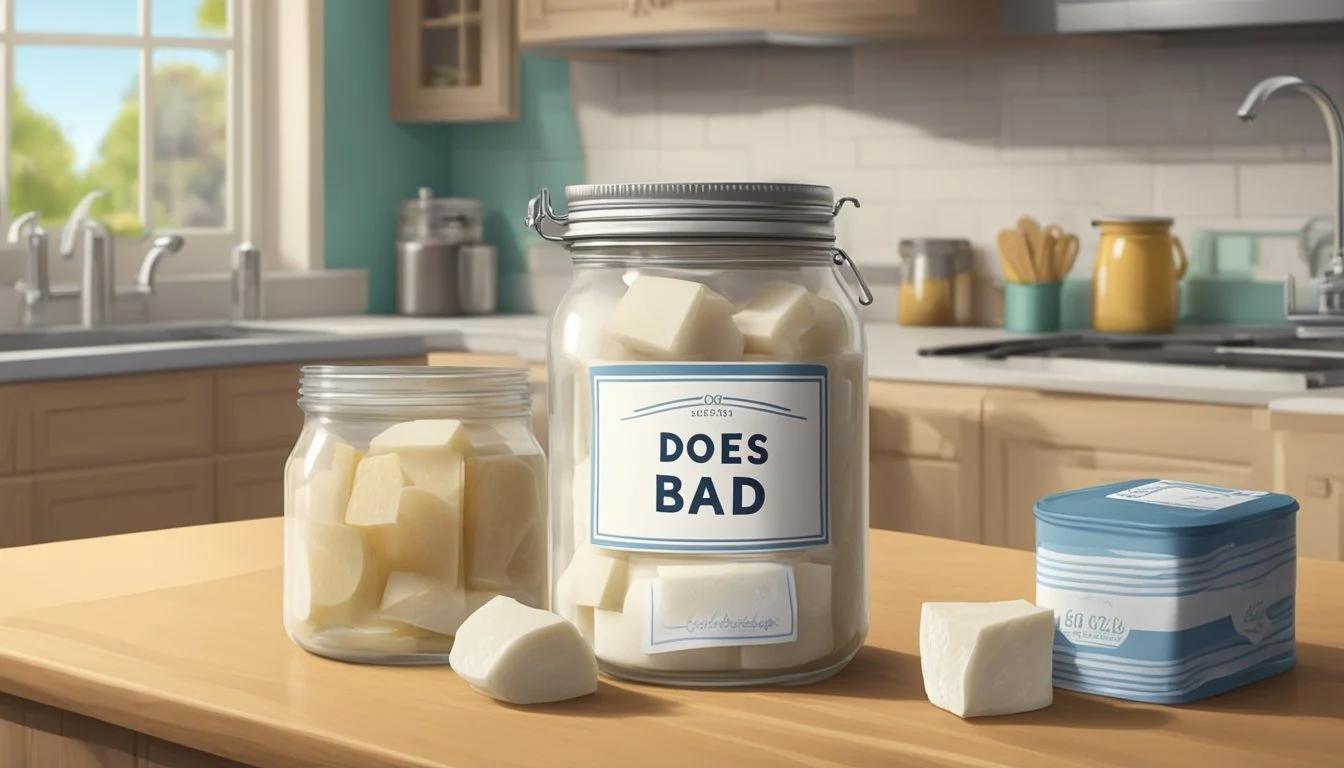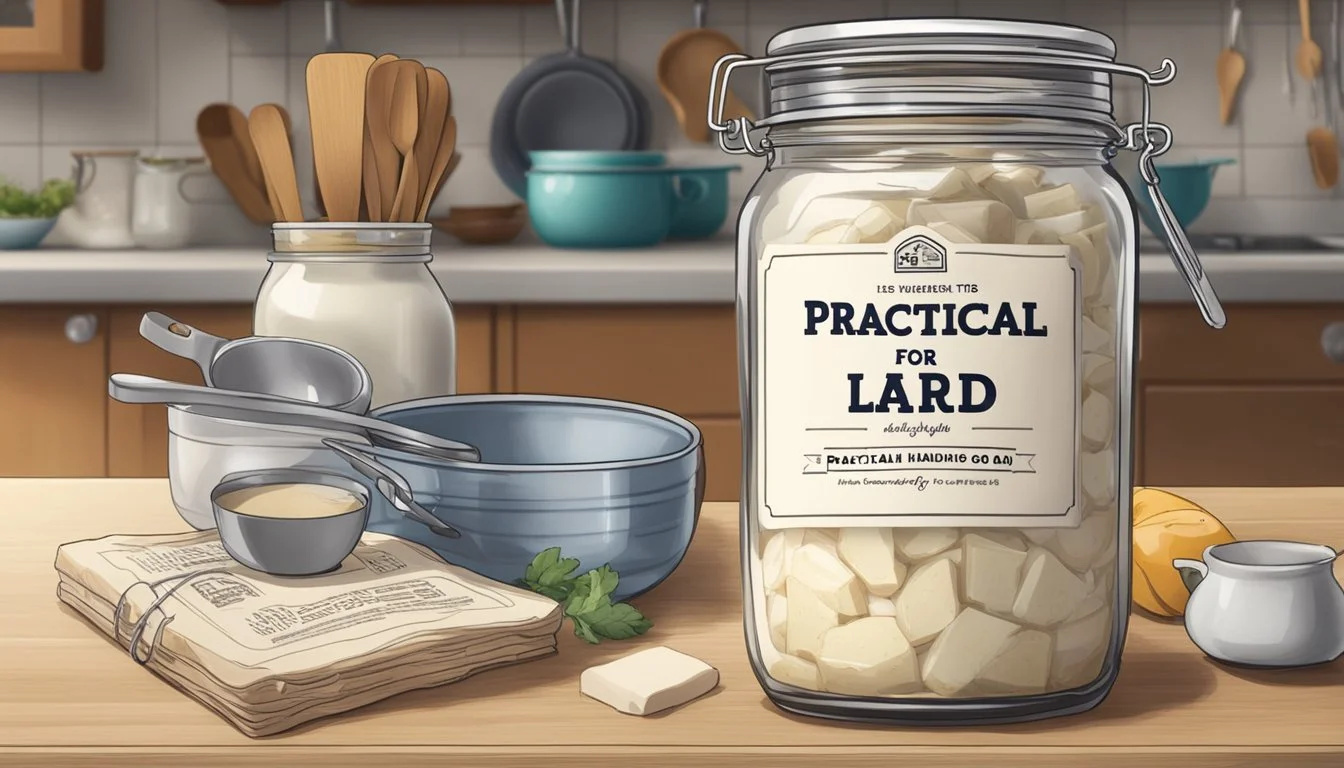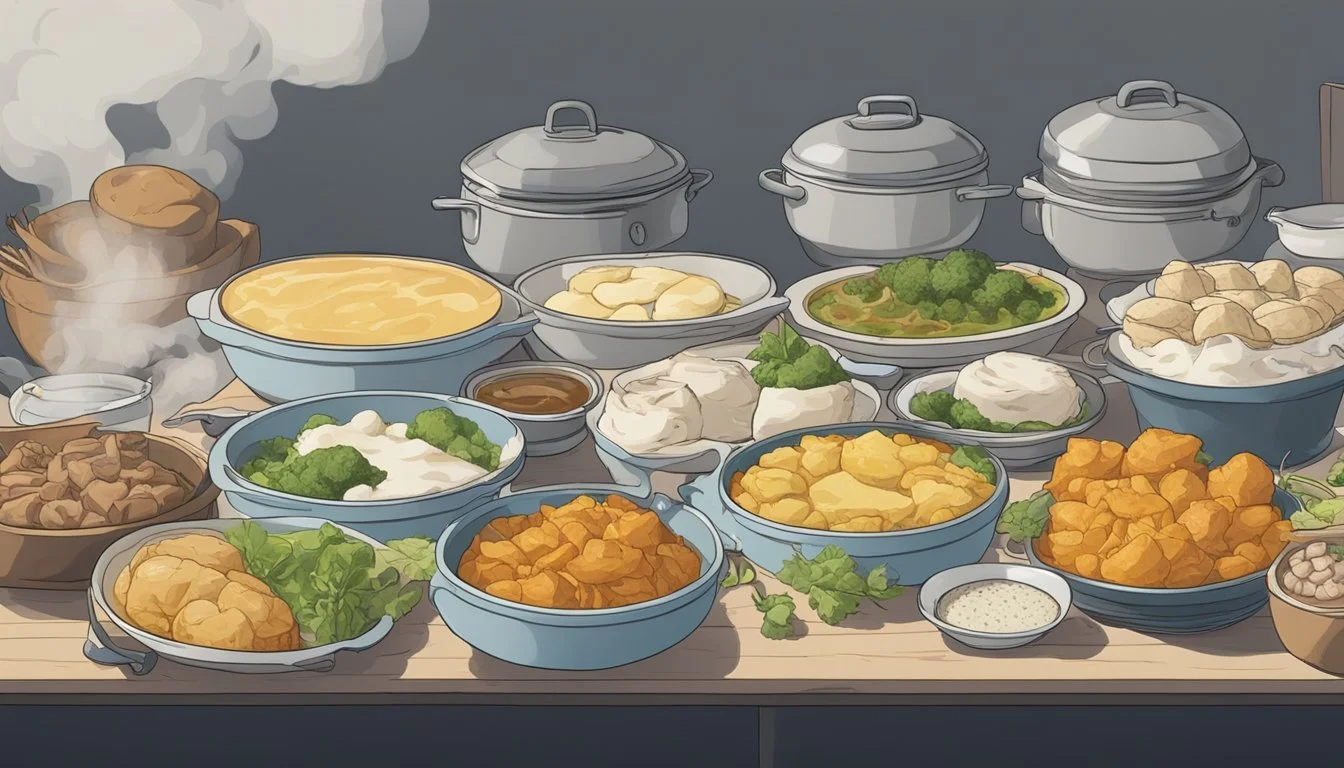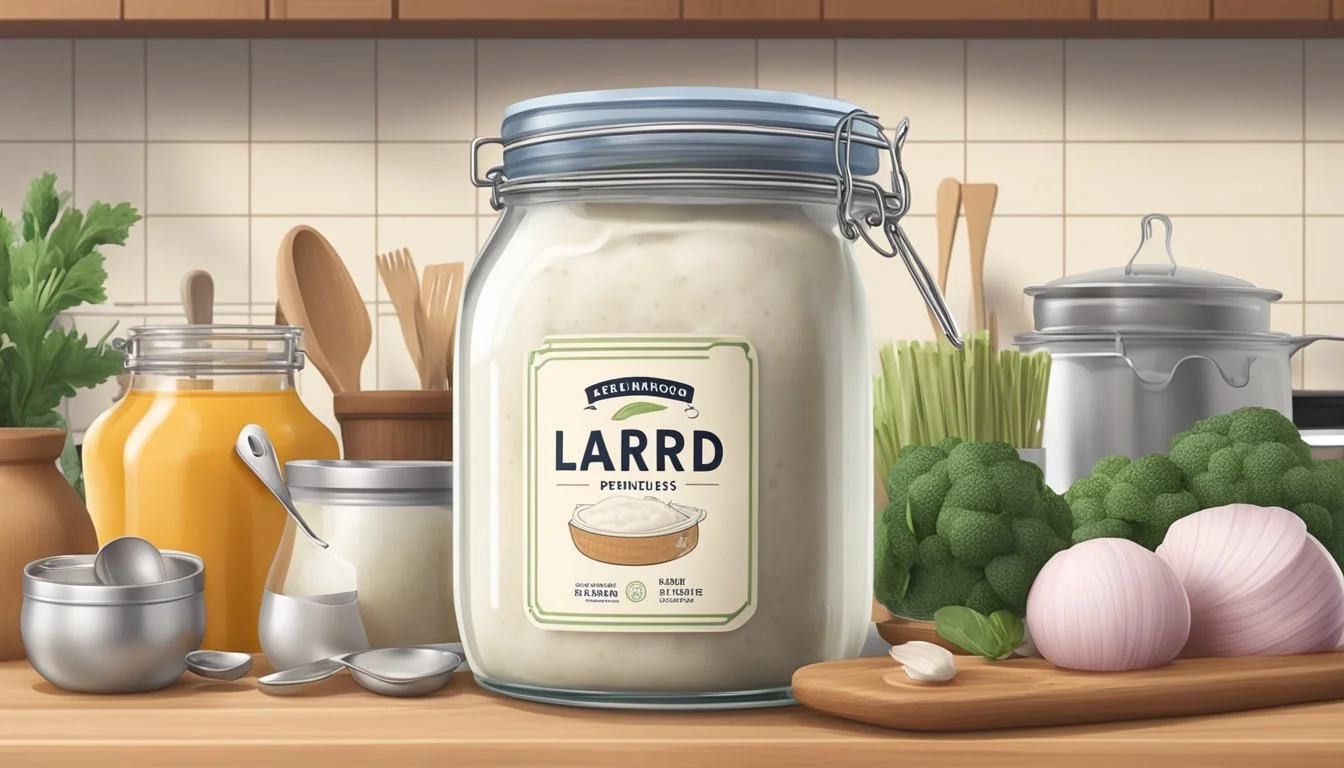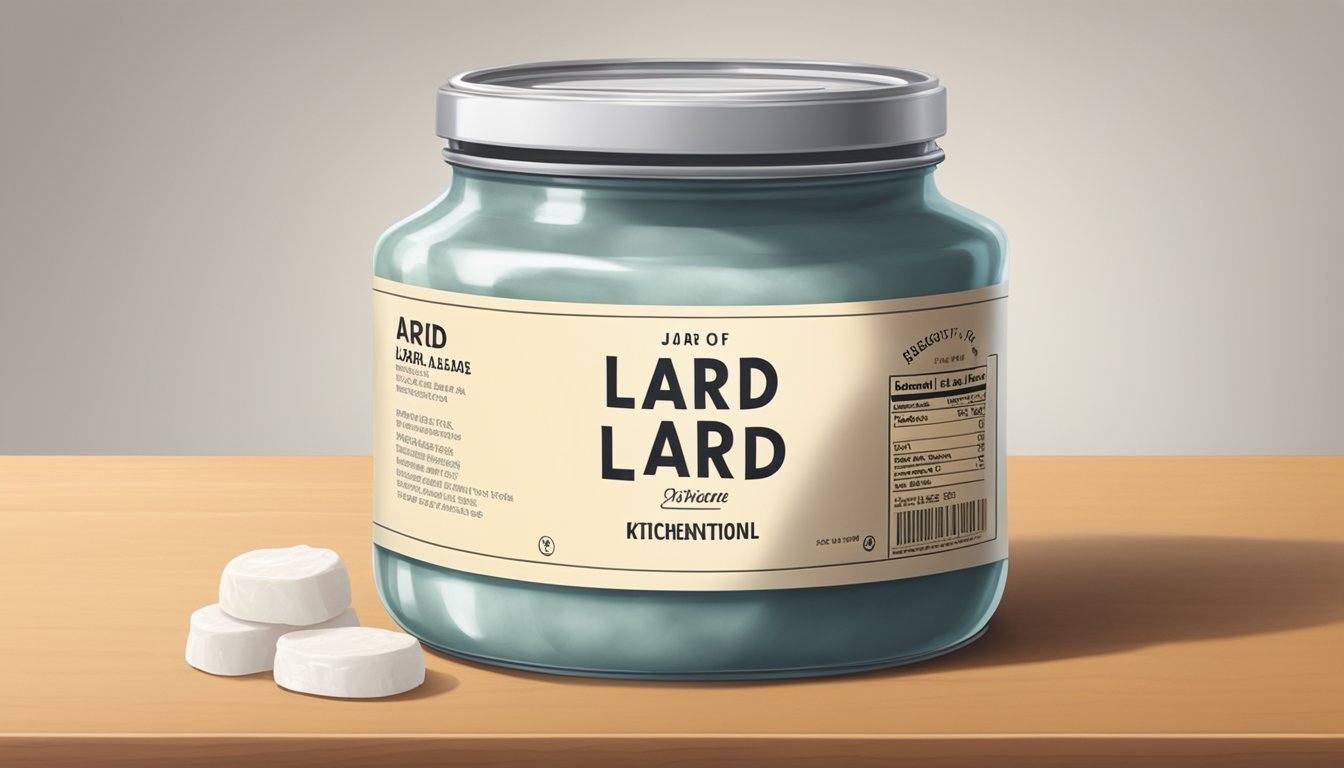Does Lard Go Bad?
Understanding Shelf Life and Storage Tips
Lard, a traditional cooking fat known for its unique flavor and high smoke point, is a byproduct of pork processing. Due to its versatile applications spanning from baking to deep frying, lard has earned a steadfast place in both commercial kitchens and home pantries. However, like all fats, lard has a finite shelf life and can go bad, which makes understanding its preservation and signs of spoilage important for any user.
When stored under proper conditions, lard can remain usable for extended periods. Typically, an unopened container of lard can last up to a year past its "best by" date if kept in a cool, dry place. Once opened, its shelf life decreases, but refrigeration can help prolong its usability. Recognizing rancidity in lard is straightforward: spoilage is often detected through an off smell, change in color, or the presence of mold, indicating that the lard has gone bad and should not be used.
Understanding Lard
Lard is a traditional cooking fat known for its rich flavor and versatility in the kitchen. It is derived from pig fat, making it a valuable ingredient in various culinary practices.
What Is Lard?
Lard is rendered fat obtained from pork meat, specifically the fatty parts of the pig. The rendering process involves melting and clarifying the fat, which then solidifies at room temperature. The result is a white, semi-soft substance that can be used in cooking and baking. Lard is appreciated for its high smoke point and ability to add moisture and flakiness to dishes.
Types of Lard
There are different types of lard, each varying slightly in flavor and best use:
Leaf Lard: This is the highest quality lard, rendered from the fat around the pig's kidneys and loin. Due to its mild flavor, leaf lard is especially coveted for baking, as it imparts little to no pork flavor to the end product.
Pure Lard: Typically found in supermarkets, pure lard is commercially rendered and may contain preservatives. It's an all-purpose lard suitable for frying and sautéing.
These distinctions in types of lard are important for cooks and chefs to consider for their desired culinary outcomes.
Freshness and Quality Indicators
Preserving the freshness and quality of lard is essential for its use in cooking and baking. Reliable indicators can help to distinguish fresh lard from that which is no longer suitable for consumption.
Signs of Fresh Lard
Appearance: Fresh lard should have a creamy white to slightly yellow color, indicating it hasn’t been compromised by heat or light exposure.
Texture: It should possess a smooth and creamy texture without any lumps or a grainy consistency.
Determining Quality
Smell: Quality lard will have a neutral, clean smell. Any sour or rancid odors are clear signs of spoilage.
Taste and Flavor: When tasted, fresh lard should have a neutral flavor, free from any unpleasant or off notes.
Storage Essentials
The shelf life of lard is significantly impacted by the way it is stored. Maintaining an appropriate temperature and using the right containers contribute to its longevity.
Proper Storage Methods
Storing lard correctly is crucial for extending its useable life span. It is important to keep it in an airtight container to prevent exposure to air, which can accelerate spoilage. Containers should be clean to avoid introducing contaminants.
Refrigeration vs. Room Temperature
Lard should ideally be stored in the refrigerator, where it can last up to a year without going rancid. At room temperature, it tends to have a shorter shelf life, typically around six months. It's vital to keep lard away from any heat sources and to maintain a stable temperature environment to preserve its quality.
Packaging and Containers
For optimal storage, lard should be kept in glass or hard plastic containers that have tight-fitting lids. When freezing lard for extended storage (beyond a year), use freezer bags or wrap it securely in baking paper followed by plastic wrap to prevent freezer burn and absorption of odors.
Shelf Life and Spoilage
The quality and safety of lard are dependent on proper storage and attention to expiration dates. It is crucial for consumers to recognize signs of spoilage to ensure they use lard that is both safe and flavor-enhancing for their cooking needs.
Shelf Life Expectancy
Pure lard can last between six months to one year when stored properly. Shelf life varies widely based on conditions such as temperature stability and exposure to air. Lard should be kept in an airtight container to minimize contact with oxygen and ideally stored in a cool, dark place. Refrigeration can extend its shelf life, adhering closely to the best-by date as a reliable indicator of quality.
Signs of Spoilage
Spoiled lard will present noticeable changes indicating it is no longer suitable for consumption. Key signs include:
Odor: A sharp, off smell that deviates from lard’s normally subtle, neutral scent is a clear indicator.
Mold: Any visible signs of mold growth should immediately render the lard unusable.
Discoloration: Changes in color, such as darkened patches, suggest spoilage.
If there is any doubt regarding the quality of the lard, it is safest to dispose of the product.
Understanding Rancidity
Rancid lard has undergone a chemical change due to oxidation, often associated with an unpleasant odor. Exposure to light, air, and heat accelerates this process, and rancid lard can negatively impact the taste and safety of food. Though a label may still indicate its within the supposed shelf life, any signs of rancidity mean that the lard should be discarded regardless of the printed expiration date or best-by date.
Freezing and Preservation
Freezing lard can effectively extend its shelf life far beyond what is possible at room temperature or in the refrigerator. The process is simple and can ensure that lard remains usable for an extended period.
How to Freeze Lard
To freeze lard, one should follow a methodical approach:
Portion the lard appropriately, depending on the amount you'll likely use in future cooking. This can be done using an ice cube tray for smaller quantities, or dividing it into larger sections if needed.
Wrap each portion of lard in parchment paper, ensuring it is fully covered to avoid direct exposure to air.
Encase the wrapped lard in a layer of plastic wrap or place it in a freezer bag. This adds an extra barrier against freezer burn and contamination.
Label the wrapped lard with the current date, so you can keep track of how long it has been in the freezer.
Place the wrapped and sealed lard portions in the freezer where they can be stored for up to three years.
Thawing and Reusing
After lard has been frozen, it can be easily thawed and reused for cooking:
Remove the desired amount of lard from the freezer and allow it to thaw in the refrigerator. This helps maintain its texture and consistency.
Once thawed, the lard should be used relatively quickly to prevent any decline in quality.
It’s important to note that once lard has been thawed, it should not be refrozen. Always thaw only as much lard as necessary to avoid waste.
Safety and Importance of Freshness
When dealing with lard, it is crucial to prioritize freshness to avoid health risks and maintain the desired quality in cooking. This focus ensures that the lard contributes positively to both the safety of the consumer and the integrity of the culinary results.
Health Implications of Consuming Spoiled Lard
Consuming spoiled lard can lead to foodborne illnesses due to the growth of harmful microorganisms. Spoiled lard often exhibits signs of mold or discoloration, and it may emit an unpleasant odor indicating rancidity.
Visual Indicators: Mold growth, discoloration
Olfactory Indicators: Unusual or rancid smell
A key safety measure is the utilization of the smell check; if the lard emits any odors that deviate from its natural, mildly fatty scent, it should not be consumed. Considering the potential for health complications, it is essential for consumers to exercise caution and dispose of any lard that demonstrates these signs of spoilage.
Freshness in Cooking
In cooking, the freshness of lard is synonymous with quality. Fresh lard ensures that flavors are uncontaminated, and the desired textures in recipes are achieved.
Texture: Consistency in texture
Flavor: Pure, unaltered taste
Fresh lard brings a smooth texture and a clean flavor profile to dishes, while spoiled lard can negatively influence the taste and safety of food. Chefs and home cooks should therefore regard the freshness of lard with the same consideration as they would any other perishable ingredient in their kitchen.
Usage and Applications in Cooking
Lard has established a firm reputation for enriching flavors and textures in various cooking and baking practices. It particularly excels in creating flaky pie crusts and crisping food during frying.
Lard in Baking
When bakers seek a tender, flaky texture for their pie crusts, they often turn to lard as an essential ingredient. Lard's high melting point allows it to create pockets of steam during baking, yielding a superior flakiness that is difficult to achieve with butter alone. For pastries such as quiche or tarts, it provides a stable structure that remains consistent through varying temperatures. While not as commonly used in cakes or cookies, where a lighter texture is desired, lard is frequently the preferred fat in more traditional, savory pastry recipes.
Lard can also be substituted in recipes that call for fats like butter, olive oil, or coconut oil, though the flavor profile will differ. Chefs should adjust proportions based on lard's unique characteristics, which can impact moisture and density when used in recipes.
Frying with Lard
Lard's popularity in frying stems from its high smoke point, making it an excellent choice for cooking at higher temperatures. It has a smoke point around 190°C (375°F), which ensures that food can be crisped beautifully without the fat breaking down and causing off flavors or potential health hazards. Items fried in lard, such as fried chicken or doughnuts, often emerge with a golden, crispy exterior that is delectably moist inside.
For the health-conscious, lard is also free of the trans fats found in some commercial frying oils. When using a frying pan or baking sheet, chefs recommend maintaining a sufficient amount of lard to ensure even cooking and to avoid sticking, which can mar the texture and appearance of the food. While alternatives like olive oil and coconut oil are praised for their health benefits, they may not always deliver the same crisp results in frying due to their lower smoke points.
Substitutes for Lard
When seeking alternatives for lard in recipes, one has numerous options to choose from. Fats and oils can be swapped depending on the desired flavor and cooking method.
Alternative Fats and Oils
Butter: A common swap, butter offers a similar texture to lard and is suitable for pastries, though it may alter taste slightly.
Margarine: As a non-dairy alternative, it mimics the consistency of lard in baking and is easy to use in the same proportions.
Coconut Oil: Considered a healthier option, coconut oil provides a distinct flavor and works perfectly for both baking and frying.
Olive Oil: Best suited for savory dishes, olive oil adds a robust taste and is better used in liquid form due to its lower solidification point.
Vegetable Oil: With a neutral flavor, it can replace lard in frying; however, being liquid at room temperature, it's not suitable for all recipes.
Ghee: Clarified butter, or ghee, offers a richer flavor with a higher smoke point, ideal for frying without imparting a dairy taste.
Bacon Grease: For dishes where a meaty flavor is a plus, bacon grease is an excellent substitute that adds depth to the taste profile.
Technical Aspects of Lard
In examining the technical aspects of lard, it's important to consider its chemical composition and behavior under various temperatures, which largely determine its shelf life and culinary uses.
Chemistry of Fats
Lard is primarily composed of fats, which are molecules made up of glycerol and fatty acids. The type of fatty acids in lard includes a significant amount of saturated and monounsaturated fats. The stability of these fats against oxidation—the process which can lead to rancidity—varies. Saturated fats are generally more stable than unsaturated ones, which means lard is less prone to rancidity than oils with higher unsaturated fat content. However, over time or when exposed to heat, light, and air, lard can still undergo the oxidation process and become rancid.
Smoke Points and Cooking Temperatures
The smoke point of lard, typically around 190°C (374°F), is the temperature at which it starts to break down and smoke. This is also linked to the degradation of fats, which can produce unpleasant flavors and odors. Lard's relatively high smoke point compared to some other fats makes it suitable for high-temperature cooking methods like frying. However, constantly exceeding this temperature can reduce lard's smoke point over time and accelerate spoilage. It's important to store lard properly, keeping it in a cool and temperature-stable environment to maintain its quality.
Advices for Consumers
When purchasing and storing lard, consumers must prioritize checking labels and detecting any signs of spoilage to ensure the product's quality and safety.
Reading Labels and Expiration Dates
Labels on lard containers provide crucial information that consumers should not overlook. It is important to look for the expiration date or best-by date, which indicates how long the lard is expected to maintain optimal quality. Lard typically lasts six months at room temperature and up to a year when refrigerated, but it's essential to adhere to the dates provided by the manufacturer to avoid the risks of using spoiled fat.
Identifying Impurities and Contaminants
Lard should be inspected for impurities and contaminants before use. The consumer should perform a visual inspection for any discoloration, signals of mold, or debris, which could suggest contamination. Similarly, one should smell the lard; any off-putting or rancid odors are definite indications that the lard has gone bad. When either of these signs is present, the lard must be disposed of to avoid potential health risks.
Practical Tips for Handling Lard
Proper handling and storage of lard can significantly extend its usability while maintaining its quality. These guidelines focus on optimal techniques to prevent spoilage and flavor contamination.
Avoiding Common Mistakes
One should never use dirty utensils to scoop lard as they may introduce contaminants that can spoil it. It's crucial to avoid storing lard near strong-smelling foods since fats can readily absorb flavors and odors, which might affect its purity. Exposure to light and heat can also accelerate the spoiling process, so lard must be stored away from sunlight and warm areas.
Storage Techniques and Tips
The longevity of lard is greatly influenced by how it is stored. Keeping lard in an airtight container is imperative to prevent oxidation and contamination. For those seeking to retain lard's quality over time, the following storage techniques are advisable:
Refrigerator: Lard should last up to a year when refrigerated. Ensure it's in a sealed container to prevent it from taking on the refrigerator's odors.
Freezer: For long-term storage, lard may be kept in the freezer. Portion the lard into usable amounts before freezing to avoid defrosting more than necessary.
Non-Food Purposes: If lard has just begun to turn but is not suitable for consumption, one might consider using it for purposes such as seasoning cast iron or making soap, after filtering any impurities.
By employing these storage methods, one can maintain lard in a stable, high-quality condition suitable for various culinary applications.
Lard in Different Cuisines
Lard has been a pivotal type of fat in many cuisines around the world, appreciated for its flavor and cooking properties. Its role varies significantly from culture to culture, often influenced by historical availability and culinary traditions.
Cultural Significance
In Mexican cuisine, lard is foundational, used in making tamales and tortillas, adding a distinct flavor that is integral to the authenticity of these dishes. Chinese cuisine also relies on lard for stir-frying and pastries, adding richness and depth. In many European cultures, particularly within Eastern European countries, lard is a prized ingredient for its richness and is seen as an essential in traditional cooking.
Comparative Use in Global Cuisine
Globally, the use of lard can be examined through its inclusion in various iconic dishes:
European Cuisine: Lard is often used in pastries to achieve flakiness in crusts, and for roasting meats to enhance savory flavors.
American Southern Cuisine: Lard is a key ingredient in classic dishes like biscuits and pie crusts, where it is valued for its ability to produce a tender and flaky texture.
When comparing global use, it's evident that while some cuisines have reduced their use of lard due to health concerns or the availability of alternative fats, other cultures continue to celebrate it as a carrier of heritage and flavor in their culinary practices.
Environmental and Health Considerations
In considering the implications of using lard, one must weigh both the sustainability of its production and the health aspects of its consumption. These two facets are crucial for an informed perspective on the use of this traditional fat.
Sustainability of Lard Production
The production of lard has environmental effects, as it is a byproduct of pig farming. One must assess the sustainability of pig farms, including their impact on land use, water resources, and carbon emissions. On the other hand, the utilization of lard, which otherwise might be disposed of, demonstrates a form of waste reduction. Lard production, when derived from responsible farming practices that focus on animal welfare and environmental conservation, can be part of a sustainable food system.
Health Aspects Related to Lard Consumption
Consuming lard affects health due to its composition as a source of dietary fat. Lard consists mainly of saturated fats and cholesterol, which should be consumed in moderation considering their link to heart disease. However, when included as part of a balanced diet that monitors total fat intake, and when used in moderation, lard can be integrated into one's diet. It's important to be aware of the source and quality of lard, as well-rendered lard from healthy animals can offer a different profile compared to industrially produced alternatives.
The Future of Lard in Cooking
Lard's role in cooking is evolving, and its future will likely be shaped by consumer trends and advancements in how it is produced.
Trends and Predictions
Consumer preferences are increasingly leaning towards natural and sustainable ingredients, positioning lard for a potential resurgence in the culinary world. The trend towards whole-animal butchery, with an emphasis on minimizing waste, complements this outlook, as lard, a byproduct of pork processing, aligns with the concept of using every part of the animal.
Natural Cooking: Lard is seen as a more natural fat compared to hydrogenated oils.
Sustainability: Its use supports the sustainable practice of using all parts of an animal.
Moreover, there's a growing appreciation for traditional cooking methods and recipes where lard's unique flavor profile is irreplaceable. Its future in the kitchen seems promising, as both professional chefs and home cooks are looking to incorporate authentic ingredients into their dishes.
Technological Advancements in Production
Technological developments are expected to impact the way lard is rendered and processed.
Rendering Techniques: Innovations in rendering technologies may lead to a more efficient and cleaner production process, ensuring a purer product.
Preservation Advances: Novel preservation methodologies could extend lard's shelf life without altering its taste or nutritional profile, making it more appealing to consumers.
The potential for improved quality and ease of use may contribute to lard's growth in both commercial and home kitchens. As the culinary arts continue to evolve, so will the methods by which this traditional cooking fat is integrated into modern gastronomy.
Brand & Product Guidance
When selecting lard, the consumer is faced with various brands and product types. Each brand offers different qualities and properties, making it crucial to understand the nuances to ensure the right purchase.
Choosing the Right Lard Brand
When consumers are considering different lard brands, it's important to look for brands with a reputation for quality and purity. A higher-quality lard will typically offer better taste and a longer shelf life. They should consider:
Reputation: Brands that are well-regarded in the culinary community.
Source: Brands that transparently indicate the source of their lard can provide a sense of trust and quality.
Understanding Product Variations
Lard comes in various forms that can cater to different cooking needs. Understanding these product variations is key for consumers:
Leaf Lard: This is the highest grade of lard, ideal for baking due to its subtle flavor.
Rendered Lard: Commonly used for general cooking and frying.
Consumers should notice the product's "best by" date as it can provide a useful guideline on its expected shelf life. Proper storage — in a cool, dark place or refrigerated — is crucial in extending the life of the product.


